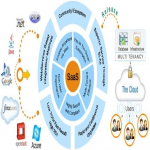
Mobile App Development
Mobile app development refers to the process of mobile application development to create or build software applications that run on a mobile device and other operating systems. The mobile applications are developed and designed for different sorts of operating systems that can run on mobile devices, such as a smartphone or tablet computer. Developing a mobile app involves different sorts of working processes from creating to testing and publishing. While doing the software development, it requires codding, implementing backend services such as data access with an API, and testing the apps for the targeted audience and operating system. This kind of service comes with the end-to-end development process of software & mobile apps for business and other analytical solutions, including UI/UX Design for testing the application. To do the development of mobile apps the UI (user interface) design is essential in every aspect, which includes constraints, contexts, screen, input, and mobility to create the design successfully. The mobile apps also have the front end and the back end development function to work, including other functionalities.
Platforms for Mobile App Development
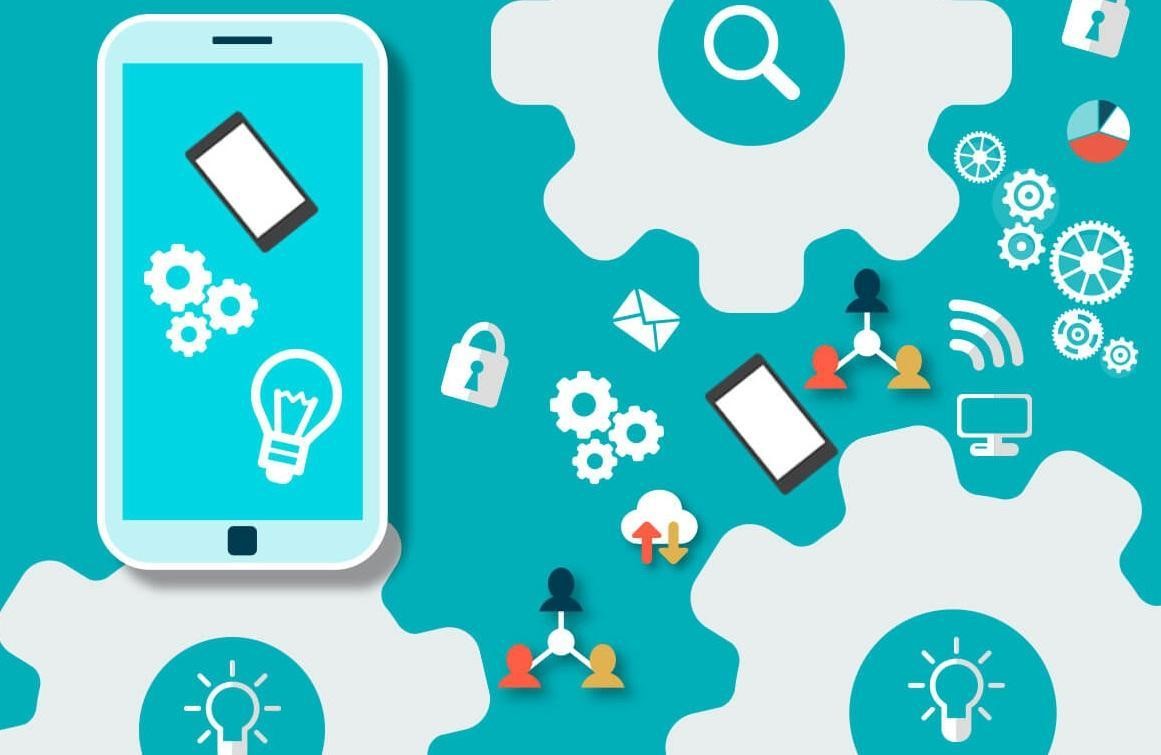
Different kinds of platforms are available in the apps or software development sector. In the case of mobile applications development, there are two dominant Android and iOS platforms in the modern mobile phones market. The android platform is from Google and all sorts of techniques, including their working functionalities, are controlled by Google. However, the android operating system is not only supported in Google devices but also in several OEMs to build their mobile phone and other smart devices. The second one is the iOS platform, it is the operating system that powers Apple's popular smartphones iPhone, and other Apple devices. Though there are some similarities between these two famous platforms for development there is some difference between them. While developing an android app or iOS different sorts of software development kits are used to develop, including different development toolchains.
Different Option for Building Mobile Apps
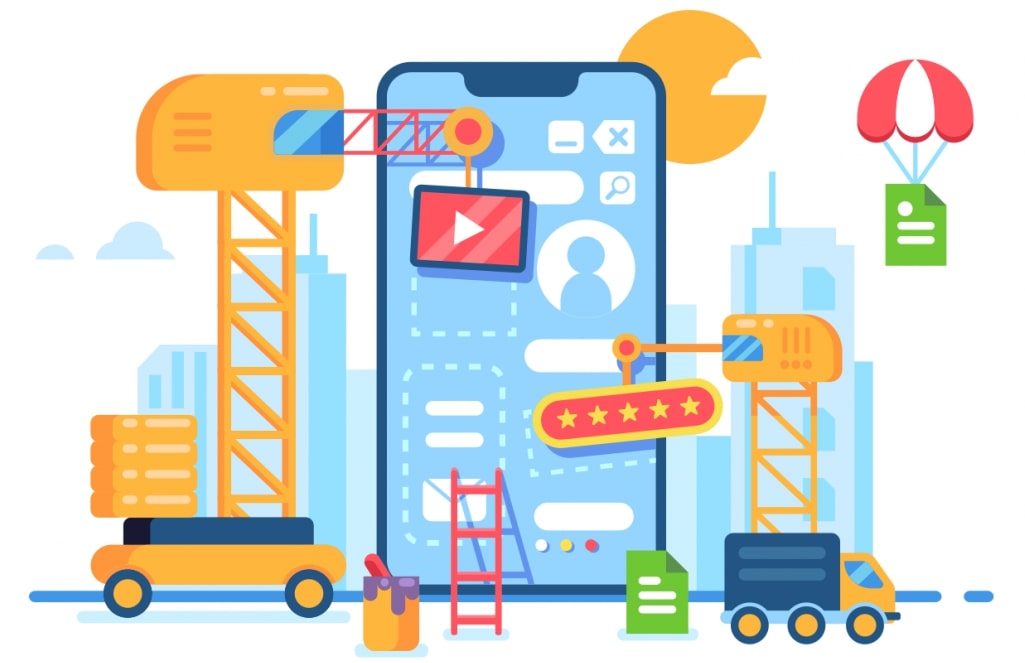
The most famous platform for developing mobile apps are Android and iOS. However, there are four major development approaches, which are required to build mobile apps or software.
The four main approaches are;
Native Mobile Applications
Cross-Platform Native Mobile Applications
Hybrid Mobile Applications
Progressive Web Applications
These are the approaches that are used to develop different mobile applications. All of the approaches are different from each other and developing mobile apps has its own set of advantages and disadvantages. You can choose any of these according to your desire to develop your mobile apps. While deciding the right approach for your project the developers need to consider several kinds of things, from computing resources to native features and other technical factors. Additionally, the development process also required the app development budget, time frame, and available resources to maintain the app.
The Native Apps Development Process
The native apps are used to develop for use in different sorts of operating systems. These sorts of apps are built using different programming languages and frameworks. It also uses different tools and SDKs, which are offered by the platform owners Apple, Google, and others. The best part of this approach is apps run natively on the platform according to your desire. Native apps development provides the best run time performance regarding any other approaches. It also takes direct data access to device APIs for better performances through platform-specific SDKs. The cost of developing native apps is high due to maintaining different codes for each platform. While developing native apps the features have to be implemented differently depending on the platform’s SDK tools.
Cross-Platform Apps Development Process
Developing your mobile apps using cross-platform is the process of building mobile apps, which can be published on multiple platforms using a single code base. It is preferable to use and saves time by not developing the app several times using the respective native technologies for each platform. However, cross-platform custom mobile app development requires different programming languages, including compiling for each platform separately. The best part of this platform is that comes with a single code base for use on multiple platforms. It also provides the best user experience to use, and that can be offered for different platforms. It is easy to build and maintain your app using this platform due to its efficiency. But the development process of this platform depends on the bridges and libraries for native app features. Due to bridging the performance of this is limited.
Hybrid Mobile Applications Development process
The hybrid mobile apps development process comes with the best web technologies; these are JavaScript, CSS, HTML, and then bundled as mobile applications to use them properly for the required platform. These sorts of apps are different from cross-platform apps because of both different using web containers and browser run time. The working method and the development process of this kind of app come with a shared codebase between web and mobile apps. However, hybrid apps development tools can be used to build mobile applications. This type of app does not provide as native performance as essential, they are built using preferable technologies for web development. Also, it provides lower performance compared with native apps. Supporting the different operating system is limited and do not support native devices. Additionally, the skillset for web development can be used for developing mobile apps.
Progressive Web Applications Development Process
The progressive apps are well-known as web applications, which are software that is delivered through the web using standard web technologies. The progressive web applications are developed using web technologies with HTML, CSS, and JavaScript. These sorts of PWA applications do not require native or cross-platform development. After the development, these kinds of apps can skip the app store, including the installations and several traditional app delivery channels. This kind of app can work itself into their browser no matter it is a mobile or desktop. These kinds of apps are web apps and also run into mobile devices. The PWA web apps can work online and run as the background process. The best part of a web app is no need to install the app it can run through a browser link using the network connection. It comes with limited support for native devices and can run using the browser’s capabilities. Also, the capabilities of PWA web apps depend on the browser in use. You can use the app comfortably, which is available both for web and mobile devices.
Types of App Development to Choose
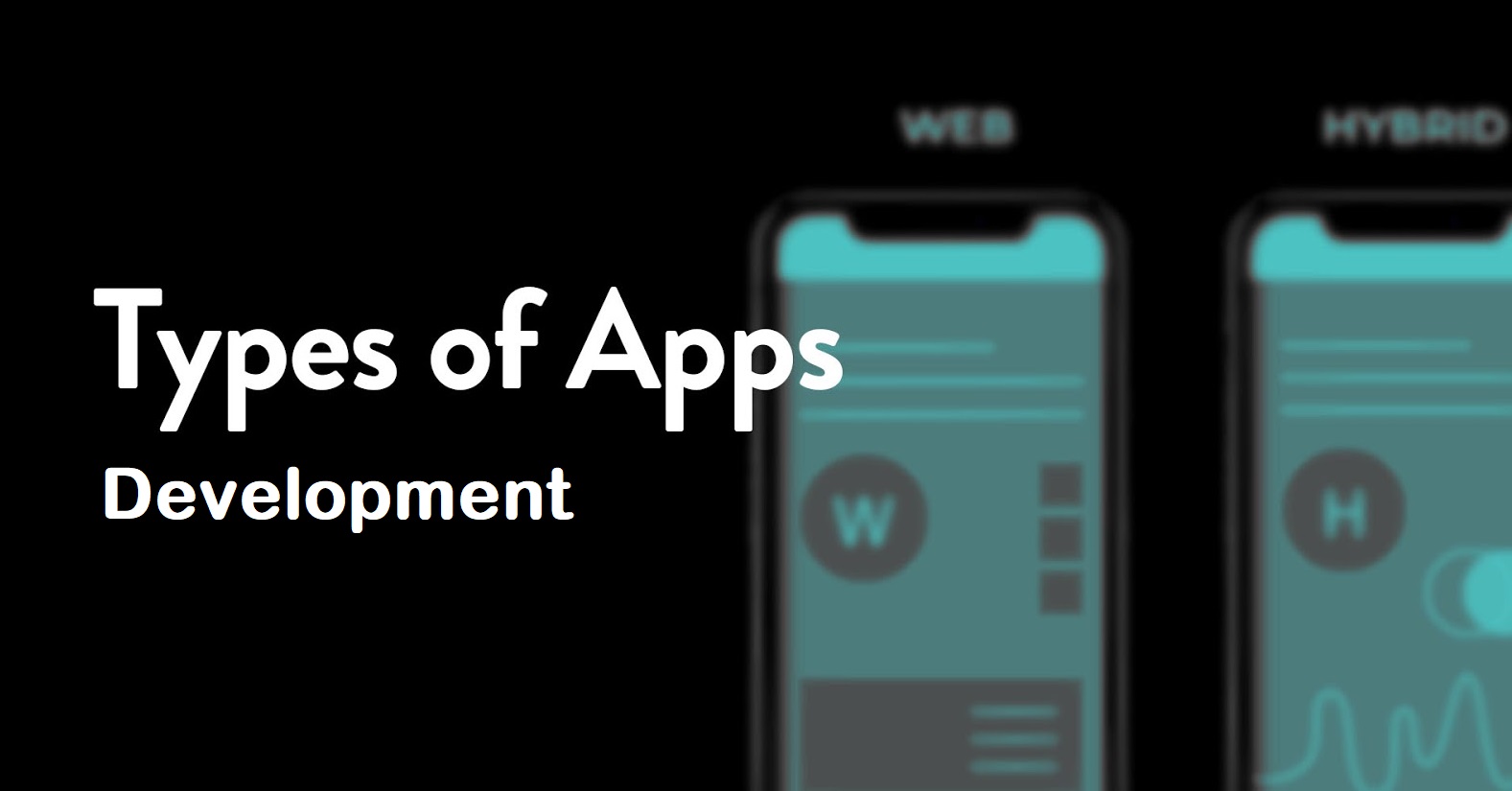
You can do different sorts of apps development using multiple platforms and other facilities. To develop an effective app there are different types of approaches to follow.
If you are deciding to develop your apps using a native approach, it offers different capabilities by platform. These sorts of apps can easily take access to the hardware capabilities of devices - such as GPS, camera, microphone, and that helps in quicker execution of features and makes it more comfortable to build a rich user experience. You can also get the push notification facilities on native development on different platforms.
If you are thinking to develop your apps using cross-platform, it appears in the market 50-50 between iOS and Android apps. It requires more budget for building separate apps for both platforms. For a better user experience across all the platforms, you need to develop for both the platforms by extending the budget and time to build and maintain the apps separately.
Developing progressive web app development requires traditional web languages to develop. These sorts of applications are only accessible through the browser link using the network connection. If you are deciding to develop this type of app, the user will get uninterrupted access to network connectivity to solve their issues through the browser itself. Also, native capabilities will not require throughout the process.
Mobile App Development Factors
To develop a mobile app there is a process to follow. Following the step-by-step process, it can help you to build mobile apps quickly. To start the apps development process, there are some basic essential terms to follow. These are;
Gather the requirement and information
Do Analysis
Develop the Product
Test the Product
These are the basic steps to develop different sorts of mobile apps conveniently. Here, we are going to describe the total process of cost-effective app development step by step. Additionally, you will get the significant factors to follow a systematic process to develop or build convenient mobile apps.
Mobile App Development Process
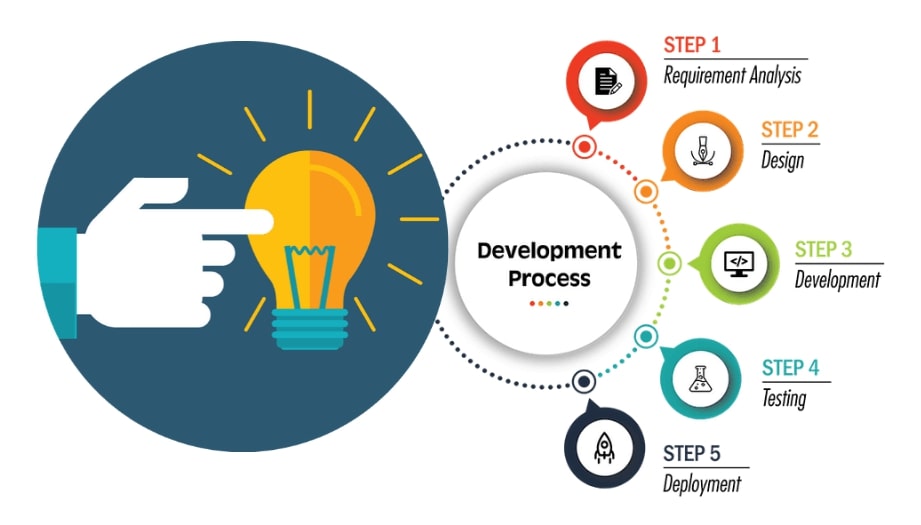
By following different sorts of guidelines, you can simply develop a mobile app according to your desire. However, to start the app’s development, you need to follow the terms one by one.
The terms are;
Strategy
Analysis and Planning
UI / UX Design
App Development
Testing
Deployment & Support
These are the important steps to follow while doing mobile app or software development.
Strategy
Before the app development process, you need to make strategies by implanting your idea to develop a successful app. You may include several significant parts to the overall working methods. Also, different aspects need to consider as one app is different from another due to the features and other objectives. Before starting the working process, you need to define the persona by identifying the app’s impacts on the users. For instance, you are planning to develop an eCommerce app, first of all, you need to understand the user’s age, preferences, and mobile usage habits. By following this, you can simply know the specific impact of your app’s development strategy. It will also help you to select a suitable platform for an app to develop.
Analysis and Planning
Analysis and Planning are the second stages of the mobile app development process. It helps to gather ideas to take shape and convert it into an actual project. You can start planning and analyzing by defining the functionalities and the actual features of the app. This will also help you to create a product roadmap by defining the requirements. By knowing the roadmap of your project, you will be able to convert the strategy into a working process, where you can priorities several things to achieve milestones. Because of the defined activities, it will help you to minimize the costs and prepare for the initial launch. No matter what type of platform you choose to develop your app that can be native, cross-platform, or hybrid, all of these are required different technology stacks. Additionally, it will help you to finalize a name for your mobile app depending on the mobile app features and user preferences.
UI / UX Design
The UI and UX of an app depend on the design that how your apps look. To create a successful mobile app UI & UX design are essential factors in app development, which provide the best user experiences by making an app interactive, intuitive, and user-friendly.
UI is the user interface, it is the process of designing your user interface to make your app look perfect. It depends on the designers to develop the structure, simplicity, and visibility, including the tolerance and reuse principle and so on. The UX is the user experience that involves several factors, like design, accessibility, usability, system performance, and utility. This designing platform also includes several factors and these are;
Information and Workflow
Wireframes
Style Guide
Mockups
Prototype
Information and Workflow: It is the first step to start the designing of your mobile app development process. The designing process helps to display the app features to the users, and the data will collect as user interactions and user preferences to the app. It also helps to identify every possible interaction a user has with the app with the app’s navigation structure.
Wireframes: Wireframes are the digital sketches of the design, which are conceptual layouts and are referred to as low-fidelity mockups. However, the wireframes focus on the aesthetics and user experience of an app. Creating wireframes helps to navigate the app’s layout design to set the device-specific design.
Style Guide: The style guides are the setup of designing apps the usable color patterns, fronts, icons, layout, and other formations. This guide is created for evaluating the design and development between parties, including the differences in the platform. It also helps in sharing topics, including layouts, graphics, components, and other functions.
Mockups: The final version of your mobile app development designs are called mockups, or high-fidelity designs. The mockup is the combination of the wireframe and the style guide to develop the final version of your design. Here you can expect further modifications in the structure, workflow, and even aesthetics with a better look according to your desire.
Prototype: Prototype refers to the low-fidelity wireframes into ready designs, which can be shared with your teams, friends, and everyone, who can use and provide their quality suggestions and feedback. The prototype is essential in designing, where you can include all the functionalities without going through development.
App Development
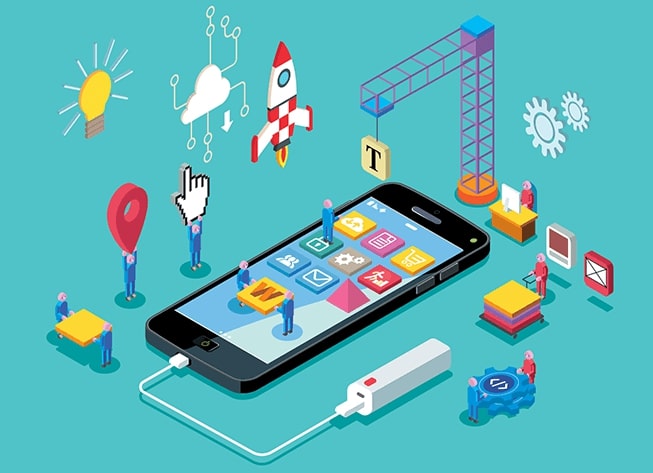
While doing app development, that includes the front end and back end development process. Here, you need to define back-end server technology and API integration, which is a method of communication between the app and database. The back-end modifications may be needed to uniform the app functionality to support the desired feature and functionality. Front-end is like the native app that the end-users will use. The front-end usually resides on the device representing the app icon, which is visible on the home screen or is pinned in the apps on the device. Also, the application can be downloaded from the platform app store, size-loaded directly on the operated device, and the browser, as in the case of PWAs. The front-end is the part of the application programming in the languages and technologies that are created to use.
Testing
After the total app development with all the security check testing is significant to develop a quality mobile app. Also, testing is important to know the quality assurance (QA) of the mobile app or software development process to make the applications stable, usable, and secure. However, this process also ensures comprehensive QA testing of your app, which involves all aspects of app testing. App testing comes in two categories manual testing and automated testing. Testing helps to know the app performance and results for software quality evaluation, including the tracking fixes for retesting. The testing process of mobile apps involves UI testing, functional testing, performance, security, device, and platform testing.
Deployment & Support
After completing the total development process of mobile apps, you need to submit the app to the desired app store and that may take a few days to several weeks to approve, which depends on the quality of your app. After the approval of your app in the app stores, you need to analyze the key performance of your app to check crash reports or other user-reported issues. The best practice for mobile app deployment is that you can monitor the application performance if there are any lackings or responsiveness issues to solve. As deployment support, the developers can keep your user interface updated regarding customer preferences to change styles, trends, habits, and other essential features. The developers also need to maintain that your app supports the latest software, which meets the regular updates and hardware updates, including the new versions of the different operating systems that release every year. The developers can also help by adding new features regularly and fixing bugs to provide the best apps user experience.

